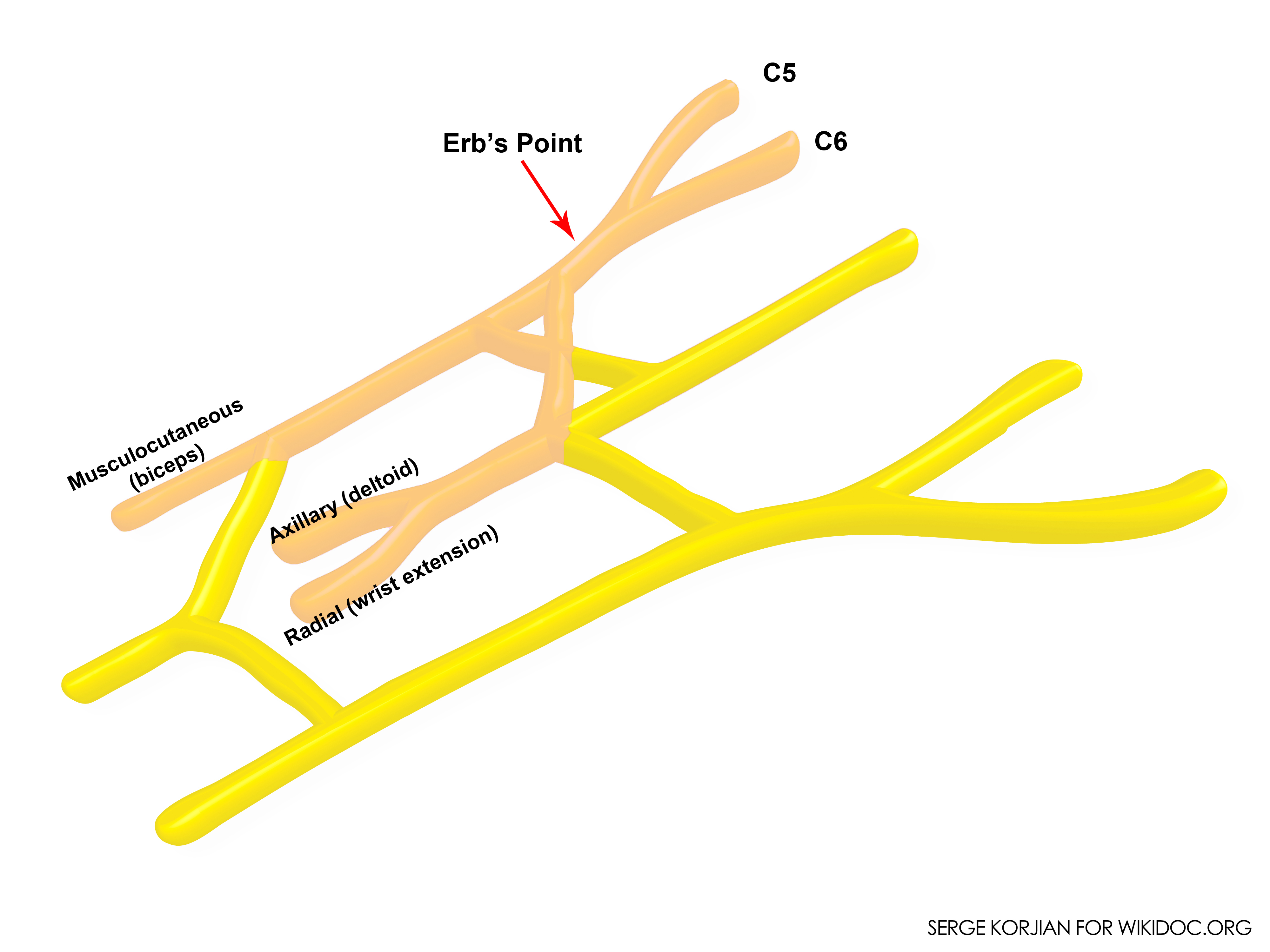WBR0472
| Author | [[PageAuthor::William J Gibson, (Reviewed by Alison Leibowitz)]] |
|---|---|
| Exam Type | ExamType::USMLE Step 1 |
| Main Category | MainCategory::Anatomy |
| Sub Category | SubCategory::Musculoskeletal/Rheumatology, SubCategory::General Principles |
| Prompt | [[Prompt::A 3-week-old female, born though vaginal delivery to a 32-year-old prima gavid female, is brought into the ER for observation. The pregnancy was complicated by gestational diabetes for which the mother took insulin before meals. The child now has an abducted, pronated left arm with flexion of the wrist, while the right arm is observed to be normal. Damage to which of the following nerves most likely caused this patient’s condition?]] |
| Answer A | AnswerA::Axillary Nerve |
| Answer A Explanation | [[AnswerAExp::The axillary nerve is not directly damaged in Erb’s palsy. However, the axillary nerve is unable to conduct nerve signals, as the cervical roots that give rise to it are disrupted (C5-C6). The axillary nerve innervates the deltoid muscle, disallowing patients with Erb’s palsy to abduct the affected arm.]] |
| Answer B | AnswerB::Radial Nerve |
| Answer B Explanation | [[AnswerBExp::The radial nerve is not directly damaged in Erb’s palsy. However, the radial nerve is unable to conduct efferent nerve signals to the wrist extensors, as the cervical roots that give rise to the radial nerve are disrupted (C5-C6).]] |
| Answer C | AnswerC::(C5-C6) |
| Answer C Explanation | AnswerCExp::See explanation. |
| Answer D | AnswerD::(C6-C7) |
| Answer D Explanation | [[AnswerDExp::While C6 is often affected in Erb’s palsy, but C7 is not. Lesions of the C7 nerve root would affect the triceps and finger extension.]] |
| Answer E | AnswerE::C8-T1 |
| Answer E Explanation | [[AnswerEExp::The C8-T1 nerve roots give rise to the Ulnar nerve. The Ulnar nerve is responsible for medial wrist and finger flexion. Lesion of the Ulnar nerve can occur due to fracture of the medial epicondyle of the humerus. Klumpke’s Palsy is a condition in which the C8-T1 nerve roots are lesioned.]] |
| Right Answer | RightAnswer::C |
| Explanation | [[Explanation::The patient in this vignette is most likely suffering from Erb’s Palsy, a condition in which the upper trunk of the brachial plexus is injured. Erb’s palsy is caused primarily by severe traction of the shoulder (shoulder dystocia) during birth. Risk factors for shoulder dystocia include either a small mother or a large infant, making passage through the birth canal more difficult. Hyperglycemia during pregnancy can lead to increased growth of the infant.
The root frequently involved is C5 (Erb's point: the union of C5 & C6 roots)[8], which is mechanically the furthest point from the force of traction. The nerve roots normally involved are C5 and partly C6. Symptoms include paralysis of the biceps (through the musculocutaneous nerve), the brachioradialis (through the radial nerve), and the deltoid (through the axillary nerve). The effect, Erb's palsy, is illustrated above. Typically, an affected person's arm hangs at the side with the hand rotated medially, often refereed to as "waiter's tip hand". Some newborns recover, while others require surgical intervention for proper shoulder function.  Educational Objective: Erb's palsy results from damage to the superior trunk of the brachial plexus (C5-C6). |
| Approved | Approved::Yes |
| Keyword | WBRKeyword::Brachial plexus, WBRKeyword::Nerve, WBRKeyword::Erb's Palsy, WBRKeyword::Upper Limb, WBRKeyword::Muscle, WBRKeyword::birth, WBRKeyword::neurological, WBRKeyword::innervation, WBRKeyword::nerve signals |
| Linked Question | Linked:: |
| Order in Linked Questions | LinkedOrder:: |